 |
Photography, Australian Landscape Photography, Panoramic Photos, |
 |
Photography, Australian Landscape Photography, Panoramic Photos, |
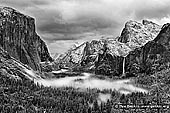 |
| Yosemite Valley and Bridalveil Falls from Tunnel View YOSEMITE-NATIONAL-PARK-CALIFORNIA-USA-0001 |
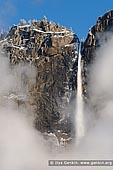 |
| Upper Yosemite Falls in Clouds YOSEMITE-NATIONAL-PARK-CALIFORNIA-USA-0002 |
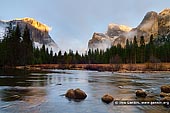 |
| El Capitan Over the Merced River, Gates of the Valley YOSEMITE-NATIONAL-PARK-CALIFORNIA-USA-0003 |
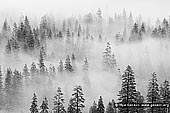 |
| Pine Trees in Clouds After a Snow Storm YOSEMITE-NATIONAL-PARK-CALIFORNIA-USA-0004 |
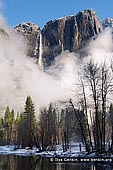 |
| Upper Yosemite Falls and Merced River After a Spring Snow Storm YOSEMITE-NATIONAL-PARK-CALIFORNIA-USA-0005 |
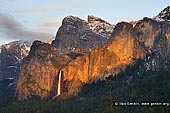 |
| Bridalveil Falls from Tunnel View YOSEMITE-NATIONAL-PARK-CALIFORNIA-USA-0006 |
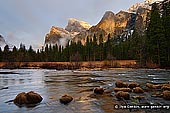 |
| Gates of the Valley YOSEMITE-NATIONAL-PARK-CALIFORNIA-USA-0007 |
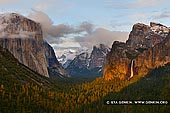 |
| Yosemite Valley and Bridalveil Falls at Sunset from Tunnel View YOSEMITE-NATIONAL-PARK-CALIFORNIA-USA-0008 |
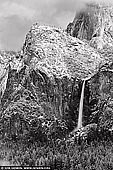 |
| Bridalveil Falls from Tunnel View YOSEMITE-NATIONAL-PARK-CALIFORNIA-USA-0009 |
Yosemite National Park, one of the first wilderness parks in the United States, is best known for its waterfalls, deep valleys, grand meadows, ancient giant sequoias, a vast wilderness area, and much more. The majestic sights of Yosemite National Park delight and inspire visitors of all generations. Yosemite spanning eastern portions of Tuolumne, Mariposa and Madera counties in the central eastern portion of California, United States. The park covers an area of 761,268 acres (3,080.74 km2) and reaches across the western slopes of the Sierra Nevada mountain chain. Over 3.7 million people visit Yosemite each year: most spend their time in the seven square miles (18 km2) of Yosemite Valley. Designated a World Heritage Site in 1984, Yosemite is internationally recognized for its spectacular granite cliffs, waterfalls, clear streams, Giant Sequoia groves, and biological diversity. Almost 95% of the park is designated wilderness. Waterfalls are a Yosemite hallmark, drawing visitors from around the globe year after year. Because many of Yosemite's waterfalls are fed by snowmelt, the amount of water rushing over each waterfall can vary widely throughout the year. In addition to those below, numerous other falls can be seen during the spring run-off or after a heavy rainstorm. Yosemite Falls is one of the tallest in North America and fifth highest in the world with a total drop of 2,425 feet. Yosemite Falls is also known for its moonbow display in spring. Bridalveil Fall (620 ft.) called 'Pohono' or 'spirit of the puffing wind' by the Ahwahneechee Indians. The wind often blows the falls sideways giving it the appearance of a 'bride's veil'. Horsetail Fall (1000 ft) is a seasonal waterfall flowing off the eastern cliffs of El Capitan. This Yosemite waterfall's location affords a spectacular effect intermittently during the last two weeks of February. During this time, it is backlit by the sun causing it to glow orange as though it were on fire. Yosemite Valley, approximately 3,000 feet deep and less than a mile wide, is known for its incredible rock formations, created from plutonic rock that cooled far below the earth's surface. Some of the most famous formations are: Half Dome (8,842 ft.) among the most recognized natural features in Yosemite, its western face is a sheer cliff of Plutonic granite - the youngest in Yosemite. Sentinel Rock (7,038 ft.) on the south side of Yosemite Valley, named for its likeness to a watchtower. El Capitan (7,569 ft.) towering 3,593 ft. from the valley floor, rock climbers from around the world come to challenge their abilities on its granite face giving visitors an excellent opportunity to view this unique sport. Yosemite has a fascinating history. It includes presidents, naturalists, Indians, wars, soldiers and tourists. It is now the third most visited National Park in the United States of America. The first people to live in Yosemite were a small tribe of Miwoks called the Awanichi. They lived there until the first white men, who were soldiers, came to Yosemite. When the soldiers came to the area, the Indians did not want to lose their land. They started the Mariposa Indian War. It was a short fight because the Indians did not have a strong defense. The war ended with the Awanichi tribe leaving their land and white men taking control of the area. John Muir was a very important man in Yosemite's history. Muir made his very first trip to Yosemite in 1864. In 1868 Yosemite was made the first state park of California. In 1869 John Muir started living in Yosemite. He studied and got to know the park really well. He then wrote a newspaper article on Yosemite. John Muir was the founder of the Sierra Club and he said, 'Do something for wilderness and make the mountain glad!' When Abe Lincoln was president, he preserved the land that Yosemite covers for the people of the United States. On October 1, 1890, 1,512 square feet of this land was granted by Theodore Roosevelt to become Yosemite National Park. If it weren't for John Muir, Yosemite would never have become a national park.
|